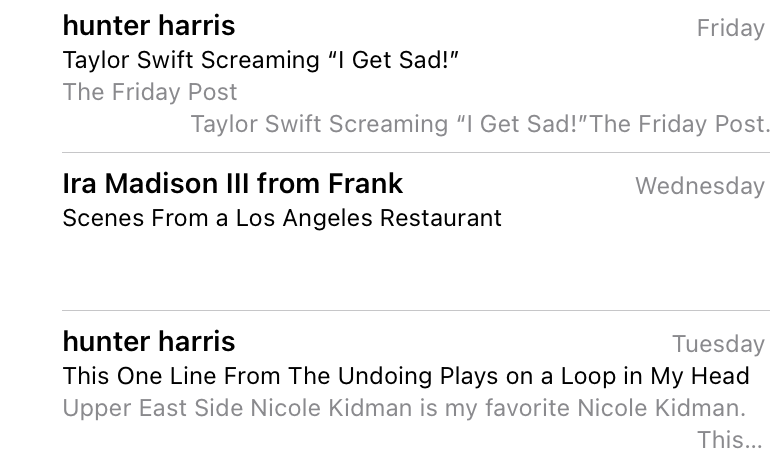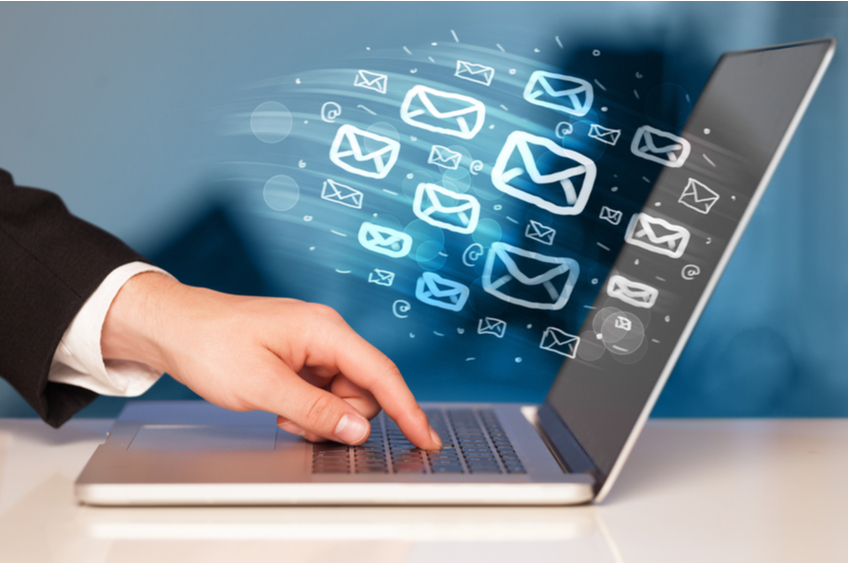Table of Contents
Maybe you thought subject lines were the most important part of an email.
Me too, until a Litmus study proved otherwise.
Forty-two percent of people surveyed said the first thing they look at when deciding to open an email is the sender, or from, name. Thirty-four percent look at the subject line first, while 24% consider the preview text first. This is likely because most email users check their inboxes via phone, and mobile inboxes display sender names first, followed by the subject line and preview text.
Sender names also happen to be one of the first things spam filters evaluate before allowing an email to enter an inbox. If a spam filter perceives a sender name to be potentially spammy or harmful, the spam filter will block the message from ever entering the inbox.
How spam filters work
For each campaign, spam filters compare “good signals,” such as:
- High open and reply rates
- Moving a message from the junk folder to the inbox
- Adding a sender to a recipient’s address book
with “bad signals” like:
- Moving a message from the inbox to the junk folder
- Deleting an unopened message
Most, if not all, of these can be direct results of a good (or bad) sender name.
Spam filters will then assign you two scores: one with an individual subscriber and the other with an email client or provider.
Both scores are considered when determining your latest campaign’s deliverability, but the latter score carries a bit more weight. If a majority of Gmail users marked your last few campaigns as spam, that can outweigh individual engagement, and your next email will likely end up in the junk folder.
In order to maintain deliverability, each campaign needs to be good enough to successfully pass through spam filters, be opened, read, and not marked as spam by your recipients. The best way to achieve this? By only emailing those who’ve opted in to your campaigns and optimizing elements like your sender name, subject lines, and content.
In order to maintain deliverability, each campaign needs to be good enough to successfully pass through spam filters, be opened, read, and not marked as spam by your recipients. The best way to achieve this? By only emailing those who’ve opted in to your campaigns and optimizing elements like your sender name, subject lines, and content.
For now, let’s specifically look at sender name best practices and optimizations.
What makes a successful sender name?
Now that you’ve got some background on the importance of sender names and how they impact your email’s ability to pass through spam filters, you should know that most successful sender names are trustworthy, easily recognized, consistent, and segmented. To achieve all that, keep in mind the following while crafting yours:
- Refrain from using a person’s name, unless they’re well-known
- Company/brand names are completely fine
- Use the title of a series or newsletter
- Do not use “do not reply”
Refrain from using a person’s name
This privilege is reserved for Oprah and other well-known public figures, such as company presidents or CEOs. We commoners can’t expect our subscribers to know who we are, and using this tactic is more likely to result in your email being deleted or marked as spam instead of opened.
Despite this, you probably have received some marketing emails from a “First Name at/from Company Name.”

This is an exception to the no-person’s-name rule, because ideally, this sender name will be used for all marketing emails, which builds trust via consistency. Besides, the company name is still featured, so it’s easy to recognize where the email came from.
This practice is widely employed by B2B companies in sales and marketing campaigns because the inclusion of a first name adds a human element to your messages that can facilitate a relationship between your company and potential customers.
So, is a person’s full name ever okay to use?
Yes, there are a few scenarios where this is acceptable. Again, if you’re Oprah. But also, if you have your own consistent newsletter.
Newsletters are meant to be informal and conversational; they should possess the voice of their authors. Using an author’s name for the sender name is a simple, yet effective personal touch that elevates the reading experience for subscribers.
Substack, a newsletter service that allows writers to generate revenue from subscriptions, has seen an uptick in popularity as many have turned to it as an outlet for freer writing. In this case, it’s super common for the sender name to be the author’s name, as the author is essentially their own brand.

A company name is perfectly fine
Yes, it’s common, but everyone’s doing it because it works. It’s trustworthy, your subscribers recognize exactly who you are, and they will readily open your email.
If you did want to add a bit of variety to your sender name without losing the command of your company’s name, consider the type of campaign you’re deploying and call it out in the sender name. This could also free up real estate in the subject line

While promoting a recent sale, Gap used the sender name “Gap Flash Sale,” which maintains the company’s name while communicating the purpose of the campaign.
Here’s also where segmentation is important. Companies and subscribers alike want to distinguish billing statements, receipts, order confirmations, shipping notifications, and the like from other marketing noise, as the contents of these emails require direct attention, so calling attention to that via the sender name is a good practice.
Furthermore, this segmented sender name should be affiliated with a dedicated, function-specific email address (i.e. “ExampleCompany Support” would be the sender name for the customer service-specific email address “support@examplecompany.com”) for organization purposes. To better illustrate this, take a look at the sender name variation among JetBlue emails:



Notice how regular marketing emails come from “JetBlue,” while a message directly related to my flight comes from “JetBlue Reservations” and a customer experience communication comes from “JetBlue Info.” (Also, those yellow arrows? That’s my inbox provider, Gmail, letting me know these emails are important because I often open emails with that label or sender name.)
Use the title of a series or newsletter
Most series and newsletters have their own titles, so it’s okay to use that as the sender name, even if the company name isn’t included. Subscribers will have deliberately opted in to receive this content, so immediately calling that out ensures you’ll grab their attention without causing any confusion.

We do this with our very own newsletter, “The Media Minute,” so our subscribers don’t have to spend time questioning who or what it is and will simply open and read.
As I mentioned earlier, newsletters are also one of the only acceptable places where a person’s full name can be used as the sender. In this scenario, think of the author’s name as the series title or brand name.
Do not use “do not reply”
Your sender name and email address should be free of this language. If not, you could appear cold and unapproachable, make your subscribers feel insignificant, or facilitate a poor customer service experience that could damage your sender reputation.
Outside of the emotions of it all, using “do-not-reply” or “no-reply” in the sender name or as the sending email address is a sure-fire way to get noticed by spam filters, as they look for this language.
To wrap it all up
Your sender name can make or break your email marketing efforts, so make sure to monitor each campaign’s analytics. Specifically, focus on the metrics relating to engagement, as well as spam complaints, as these directly correlate to the effectiveness of your sender name. They’re also what spam filters use to determine whether your next campaign will make it into subscribers’ inboxes. If those numbers aren’t where you want them to be, it’s time to optimize.
 Back to blog
Back to blog








